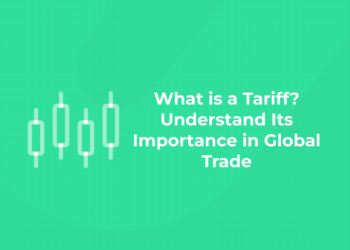Table of Contents
The primary market and secondary market in the Indian stock market must be familiar to you. But are you aware that different sorts of issues are permitted on the primary market? In this essay, we’ll talk about a few of these issues. Let’s first review the primary market’s definition and attributes before moving on. The primary market is a section of the capital market where businesses, governments, and other institutions can raise money or capital through the sale of debt or other securities with an equity component. This market is also referred to as the New Issue Market because securities are sold there for the very first time. Consider the following major market characteristics:
- In the primary market, new issues of securities such as shares, bonds, ETFs, and other marketable assets are introduced.
- It lacks the physical presence that stock exchanges provide for the secondary market.
- It comes before the secondary market since securities float through it before being traded there.
- It uses a variety of techniques to raise money.
- It sells securities to investors and provides underwriting services.
Under the primary market, many kinds of marketable securities are issued. They could be public issues, rights issues, bonus issues and private placements. Offer for sale comes under public issue and Qualified Institutional Placement (QIP) comes under private placements. For understanding the differences between them fully first we need to know their meaning and how they work. Continue reading this age to learn more about these topics.
Master stock trading with us. Enroll now for a free demo!
What is an Offer for Sale?
One of the most transparent methods of investing in the stock market is through an offer for sale, or simply an OFS. Investors typically prefer to invest through an Initial Public Offer (IPO), Follow on Public Offer (FPO), or just by purchasing equities directly from the exchange. But what if you could acquire equities directly from the company’s owners? This is how an offer for sale functions.
A listed firm’s promoters, or owners, sell their shares to the general public through an offer for sale (OFS). The stock exchange’s operations are open to the public. However, any random corporation cannot make an offer for sale. an offer for sale can only be made by the top 200 market-capitalized corporations. Offer for Sale is quite well-liked by Public Sector Units (PSUs). It assists the government in achieving its disinvestment goals. Retail investors typically receive a discount on a PSU offer for sale. The idea of an offer for sale (OFS) is relatively new to Indian investors, in contrast to IPOs or FPOs. In February 2012, the Securities and Exchange Board of India (SEBI) formally launched the offer for sale. This was done per a SEBI directive that promoters cannot own more than 75% of listed companies. In the past, an offer for sale was exclusively open to promoters. However, any shareholder with more than 10% of the company’s shares can now sell their shares. The finest aspect of an offer for sale is that investors often receive shares at a 5 per cent discount. It’s not necessary to give a discount, though. It solely depends on the management’s perspective.
Start investing like a pro. Enroll in our Stock Market course!
Reasons for an Offer for Sale
1: What is a stock?
Promoters are the company’s owners. They put money, time, and effort into starting the business. So, what makes them want to sell their stake? Does a sale proposal imply that the company’s investors have lost interest? Not essentially. Promoters may use an offer for sale to sell their shares for any of the following reasons:
- Government Regulations: According to SEBI, promoters are not permitted to own more than 75% of a listed business. Therefore, to comply with government laws, a promoter who owns 80% of the firm must offer 5% of the company’s shares via an offer for sale.
- Personal reasons: Starting a business is similar to buying an asset. Assets are made to help you in times of need. Similar to this, even promoters occasionally require money for private purposes, which is why they can make an offer to sell.
- Diversification: Just like us, promoters could want to invest their earnings in the business. To diversify their entire portfolio, they sell their ownership and make investments in other companies or assets.
- Abandoning a Sinking Ship: This is the only reason why an offer for sale raises a red flag. Promoters are familiar with the industry inside and out. If there is a problem with the business, they would be the first to know. As a result, an offer for sale can provide an opportunity for promoters to escape a sinking ship.
Investors should therefore investigate the motivation behind an offer for sale before making a purchase. Are they giving up on a sinking ship? Or are they selling their stake to satisfy legal requirements?
Join to learn the basics of the stock market from experts
Start Your Stock Market Journey Today!
Learn practical strategies, minimize risks, and grow your wealth confidently. Enroll now and take your first step toward financial success!
Know moreHow Does an Offer for Sale Work?
An offer for sale differs from initial public offerings (IPOs) due to its simplicity and affordability. An IPO launching is a laborious process. You must apply to SEBI, create a red herring prospectus, select lead managers, and more. It takes a lot of time and money. An offer for sale, however, is exempt from these conditions. Here’s how an offer for sale tends to work.
- The company’s promoters decide to sell their shares via an offer for sale.
- This information is sent to the exchanges at least two days before the offer for sale. This is required.
- The corporation makes the date of the offer for sale public. The offer for sale is only active for one trading day, unlike IPOs.
- The floor pricing is declared by the company. The promoters’ minimum share price at which they are prepared to sell their shares is this. An offer for sale cannot accept a bid below the floor price.
- The business declares the cut-off price after receiving all of the offers.
- The shares will be given to the investors who placed a bid above the cut-off price, and the money will be given to the promoters.
Click to learn everything about the stock market a new investor should learn
Who Can Invest in an Offer for Sale?
In an offer for sale, there are two different sorts of investors.
- Retail Investors: Retail bidders are those whose total bid amount is less than Rs 2 lakh.
- Institutional Investors: In an offer for sale, there are additional non-retail institutional investors like Pension Funds, Insurance companies, Foreign Institutional Investors, Mutual fund companies etc.
According to SEBI, a minimum of 25% of the issue size in an offer for sale must be set aside for institutional investors such as mutual funds and insurance firms. Additionally, 10% must be set aside for individual investors. Therefore, to qualify for the 10% retail investor quota, make sure your total bid amount is less than Rs 2 lakh when submitting an offer for sale.
Master stock trading with us. Enroll now for a free demo!
Price Discovery in an Offer for Sale
Given that the stock is listed on the exchange, the price discovery process in an offer for sale is fairly transparent. There is virtually little room for price discovery manipulation because the stock’s current market price is publicly disclosed. Promoters are unable to exploit investors unfairly by setting an absurdly high cutoff price. The cut-off price should ideally be the same as the share price. Therefore, it is impossible to manipulate stock prices in an offer for sale. This is not an initial public offering (IPO), where corporations are allowed to choose the floor price because the stock is not yet accessible to the general public.
Start Your Stock Market Journey Today!
Learn practical strategies, minimize risks, and grow your wealth confidently. Enroll now and take your first step toward financial success!
Know moreAllotment of Shares in an Offer for Sale
There are three possible ways to distribute shares in an offer for sale:
- Single Clearing Price: No matter how many shares are offered, every investor will receive shares at the same price. The playing field is levelled for ordinary investors as a result.
- Multiple Clearing Price: Here, based on the quoted bid price, many investors purchase shares at various prices.
- Cut-off Price Option: In this scenario, investors receive shares at the cut-off price, which is the lowest price. Investors don’t need to worry about the price discovery because they will only receive the shares at the cut-off price, regardless of the price that has been discovered.
Click here to learn more about the influence of QIP on the stock market
Definition of Qualified Institutional Placement (QIP)
Fundamentally, a qualified institutional placement (QIP) is a method for listed companies to obtain money without having to file any paperwork with market regulators. In India and other Southeast Asian nations, it is typical. The rule was developed by the Securities and Exchange Board of India (SEBI) to prevent corporate reliance on foreign capital sources.
How a QIP (Qualified Institutional Placement) Operates?
Initially, the Securities and Exchange Board of India (SEBI) designated a qualified institutional placement (QIP) as a securities issue. An Indian-listed firm can raise money in its home market using the QIP without having to notify any market regulators in advance of the issuance. The SEBI restricts businesses to exclusively using the issuance of securities to raise capital. On May 8, 2006, the SEBI announced the rules for this distinctive form of Indian funding. The main goal of creating QIPs was to prevent India from relying too heavily on foreign capital to finance its economic expansion. Before the QIP, Indian regulators had begun to worry that domestic companies were using American depository receipts (ADRs), foreign currency convertible bonds (FCCBs), and global depository receipts (GDR) more frequently than Indian-based capital sources to seek overseas funding. The QIP rules were put forth by the authorities to encourage Indian enterprises to raise money domestically rather than through international channels. QIPs are beneficial for several causes. Their use saves time since they provide access to finance and QIPs far more quickly than a follow-on public offer would (FPO). The speed is because QIPs must adhere to significantly fewer legal laws and restrictions, which makes them much more economical. Additionally, there are lower legal fees and no costs associated with listing internationally.
Click here to learn details of laws regarding an offer for sales and QIP
What are some of the Guidelines Regulating QIPs?
Some of the guidelines and requirements for a business to raise money through a QIP are as follows:
- The company must meet the minimal shareholding requirements outlined in its listing agreement to be listed on a stock exchange.
- At least 10% of the company’s issued securities must go to mutual funds or allottees.
- If the issue is up to Rs 2.5 billion in size, the company should make sure that there are at least two allottees, and if the issue is beyond Rs 2.5 billion, at least five allottees.
- A single allottee may not get more than half of the entire amount allotted.
- Allottees must be unrelated to the issue’s proponents in any way.
Who is a Qualified Institutional Buyer (QIB)?
A Qualified Institutional Buyer (QIB) could be anyone listed below.
- foreign portfolio investor other than Category III foreign portfolio investor registered with the Board
- foreign venture capital investor registered with the Board
- A pension fund with a minimum corpus of twenty-five crore rupees
- A mutual fund
- Insurance funds that are set up and managed by the army, navy or air force of the Union of India
- A scheduled commercial bank;
- National Investment Fund
- A state industrial development corporation;
- Alternative Investment Fund
- An insurance company registered with the Insurance Regulatory and Development Authority
- A provident fund with a minimum corpus of twenty-five crore rupees
- A public financial institution as defined in section 4A of the Companies Act, 1956;
- A multilateral and bilateral development financial institution;
- venture capital fund
Click here to understand more about the stock market and its working
Difference between Offer for Sale and Qualified Institutional Placement
The difference between Offer for Sale and Qualified Institutional Placement is listed in the table below.
| Offer for Sale | Qualified Institutional Placement |
| Offer for Sale is a mechanism used by promoters to reduce their stake and offer it to other participants. | Qualified Institutional Placement is a mechanism used by a listed entity to raise capital from various QIBs for various uses. |
| Offer for Sale does not intend to raise any fresh capital. It transfers the ownership from one shareholder to another. | Qualified Institutional Placement intends to raise some capital from the QIBs to increase the capital base of the country. |
| In an Offer for Sale, the bidder has to pay the full amount upfront to complete the transaction. | In Qualified Institutional Placement, the payment is done internally as the transactions are done between the QIBs and the issuer company. |
| In an Offer for Sale, the company decides the price band within which the bids take place | In Qualified Institutional Placement, the company decides the floor price at which placement will be done. The price offered is usually a discount. |
All the necessary details to understand the topics of Offer for Sale and Qualified Institutional Placement and the differences between them. Download the entri app to learn more about various topics coming under the subject of the stock market.











